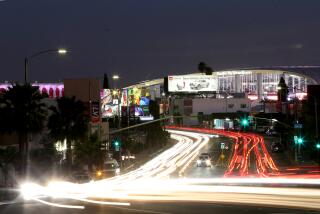Fewer Parking Spaces
- Share via
* Rail construction has been a big waste of taxpayer monies, but now that we’ve got transit stations, let’s encourage development in the areas around them [“Transit Village as Wave of Future,” Oct. 3]. Transit villages will generate revenue for the MTA--perhaps even enough to allow them to end the strike and pay their drivers a fair wage.
I was dismayed to read about the inclusion of large amounts of parking at existing and planned transit village projects. While some parking may be inevitable, is it really “transit oriented” if it has several hundred parking spaces? Given the proximity to the station, it’s important that we minimize money and space wasted on parking. No pedestrian wants to walk through a sea of parking to arrive at their destination.
The biggest opportunities for transit villages are in our older neighborhoods, including Koreatown, where I live. Older neighborhoods were laid out prior to automobile overdependence, and are therefore more dense and more conducive to transit, walking and bicycling. Many residents, including myself, do not own a car.
Thanks to the hard work of many local individuals and organizations, and the leadership of our Council member, Jackie Goldberg, we have a newly approved Station Neighborhood Area Plan (SNAP) for the Koreatown/East Hollywood area. SNAP codifies transit-oriented development, increases neighborhood parks and schools, calms traffic and even sets limits on new parking.
The challenge posed in your article is to “introduce urbanity into an area without destroying it.” The answer is true transit village development, but, please, hold the parking!
JOE LINTON
President, Los Angeles County
Bicycle Coalition
Koreatown
More to Read
Sign up for Essential California
The most important California stories and recommendations in your inbox every morning.
You may occasionally receive promotional content from the Los Angeles Times.












